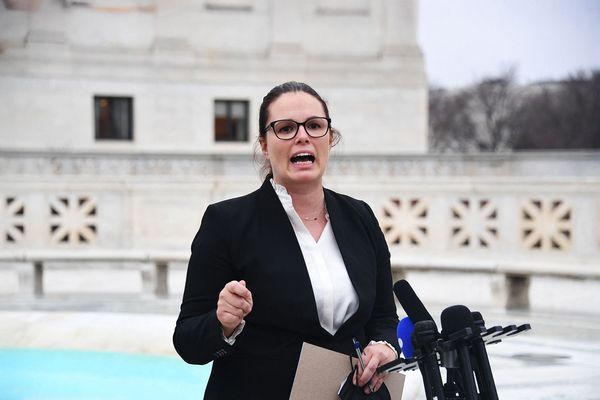
Russian Anna Blinkova’s upset second-round marathon win over third-seed Elena Rybakina from Kazakhstan saw the longest tiebreaker in Grand Slam singles history, emerging from a 31-minute, 42-point tiebreaker in the final set to win 6-4, 4-6, 7-6(22-20). It got your correspondent thinking about some of the weirdest and wackiest overtime stories.
John Isner vs Nicolas Mahut, Wimbledon 2010
Sticking with tennis, the longest-ever match will stick in the minds of most readers. Just over a decade ago, American John Isner and Frenchman Nicolas Mahut played an extraordinary match in the first round at Wimbledon. The match started at 6.13pm on Tuesday, June 22, 2010, and didn’t finish until 4.47pm on Thursday, June 24. It took three days, taking 11 hours and five minutes of play, eight hours of which were the final set.
The All-England Club at the time didn’t have final-set tiebreakers at Wimbledon, meaning players had to win by two games. As a result, Isner would eventually emerge victorious with a scoreline of 6-4, 3-6, 6-7(7-9), 7-6(7-3), 70-68. The IBM scoreboard wasn’t even programmed to go beyond 47-47 and had to be reprogrammed.
In response, Wimbledon introduced a fifth-set tiebreaker, as did other Grand Slams. Isner and Mahut were honoured with a plaque outside Court 18, and would proceed to meet two more times on the professional tour (including again in the following year in the first round at Wimbledon). Isner would go out victorious in straight sets both times, and the pair remain friends to this day.
The lights go out at Waverley
The Age football writer Rohan Connolly described it as a “farce” on a fateful Saturday night in 1996 when the lights went out at Waverley Park. With Essendon leading St Kilda 9.9 (63) to 6.7 (43) late in the third quarter, the floodlights flickered for a moment before cutting out completely, sending a crowd of 40,000 into pandemonium.
A nearby United Energy substation fault blacked out much of Melbourne’s southeast from Glen Waverley to Cranbourne, and with it, as a boundary throw-in deep in the Bombers’ 50 was about to be taken, Waverley Park itself.
Fans invaded the pitch, bringing down the goalposts and lighting fires. Essendon skipper Gary O’Donnell described it as “anarchy”.
“It’s amazing what people do when they’re in a mob mentality,” he told The Age.
Then-Essendon coach Kevin Sheedy, however, took a less concerned view.
“They’ve still got to get home with a goalpost over their shoulder. That’d be difficult,” he said.
“Obviously it would have been all those St Kilda fans.”
The game would be abandoned just after 10pm, and debate raged over whether the game should be abandoned, both teams sharing the points, or the game completely replayed. Eventually, the AFL commission decided to complete the rest of the game on the following Tuesday night, with two 12-minute halves. Both teams would be allowed to change their teams and anyone who had played on either day would be eligible for Brownlow votes.
The Dons took full advantage, bringing in reigning best-and-fairest James Hird, who led Essendon to a 22-point win in front of 17,000 fans on a Tuesday night. Hird racked up 10 touches that night, and would eventually win the Brownlow Medal later that year.
It would change the game, with draws now declared for matches called off before half-time, and victories declared for teams leading after half-time.
South Africa vs England, 1939
Some readers may not know that Test cricket once often went even longer than five days. Tests before World War II were timeless, designed to guarantee a result, and the story that led to the end of the timeless Test is a classic.
South Africa hosted England for the fifth Test in Durban in the summer of 1939. South Africa won the toss and batted for the first four days, instructed by skipper Alan Melville to “camp on the wicket”. They were eventually bowled out for 530 after a rest day on day three, with England bowled out for 316 in reply. Opting not to enforce the follow-on to “pile on the agony”, South Africa would spend the next two days racking up 481 to set the English an impossible 696 for victory.
Led by its talismanic captain Wally Hammond, England began its second innings on day seven, and batted on, and on, and on. They’d be 253/1 at the end of day seven, with no play on day eight owing to rain. At this point, England was scheduled to have left Durban for Cape Town already. Day 10 saw another rest day and day 11 saw batter Bill Edrich rack up 219.
At tea, he reportedly recalls, he was “thoroughly fagged”, and knocked out two glasses of champagne to try and “get [him] going again”. He was caught out at short leg two balls later.
England would continue to bat and bat and bat, reaching 496/3 by stumps and needing only 200 for victory. However, the team was due to board the RMMW Athlone Castle departing Cape Town to return to Southampton, and needed to undertake the 1600km journey from Durban. It was subsequently announced that the tenth day’s play would be the last, to the relief of everyone involved. England would reach 654/5, with only 46 needed for victory, before rain intervened, and while the English could have flown out the following day, Hammond had had enough.
“I don’t think timeless Test matches are in the best interests of the game, and I sincerely hope that the last one has been played.”







